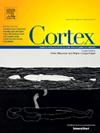长期COVID的持续神经认知缺陷:轻度感染后结构变化和网络异常的证据
IF 3.3
2区 心理学
Q1 BEHAVIORAL SCIENCES
引用次数: 0
摘要
本研究旨在调查轻度SARS-CoV-2感染个体的神经认知缺陷、大脑结构改变和网络异常,有无脑雾,作为长期COVID的症状。对75名参与者进行了一项横断面研究,将其分为三组:24名健康对照组(hc), 26名无脑雾的COVID-19幸存者(woFOG)和25名脑雾患者(wFOG)。神经心理学评估包括自由和线索选择性提醒测验(FCSRT)和阿登布鲁克认知测验-修订(ACE-R)。使用基于体素的形态测量(VBM)和静息状态功能MRI (rs-fMRI)检查脑结构和功能改变。与woFOG组和HC组相比,wFOG组表现出明显的认知障碍,特别是在延迟自由回忆、注意力、记忆和视觉空间技能方面。结构MRI分析显示,与hc相比,两组患者左侧颞下回、左侧梭状回和右侧眶回的灰质浓度(GMC)均有所降低。此外,与woFOG组相比,wFOG组在双侧尾状核、右侧壳核/苍白球和杏仁核中显示出进一步的GMC减少。rs-fMRI分析显示,COVID-19幸存者的连接模式发生了变化,其特征是默认模式网络和视觉网络的连接增加,背侧注意网络的连接减少。这些发现表明,即使是轻微的COVID-19也会导致持续的神经认知缺陷、大脑结构改变和功能网络异常,无论是有脑雾还是没有脑雾的人。观察到的变化强调了长期监测和有针对性的干预措施的重要性,以解决长期COVID的潜在认知和神经后果。本文章由计算机程序翻译,如有差异,请以英文原文为准。
Persistent neurocognitive deficits in long COVID: Evidence of structural changes and network abnormalities following mild infection
This study aimed to investigate the neurocognitive deficits, structural brain alterations, and network abnormalities in individuals who had a mild SARS-CoV-2 infection, with and without brain fog, as a symptom of long COVID. A cross-sectional study was conducted involving 75 participants, categorized into three groups: 24 healthy controls (HCs), 26 COVID-19 survivors without brain fog (woFOG), and 25 with brain fog (wFOG). Neuropsychological assessments included the Free and Cued Selective Reminding Test (FCSRT) and Addenbrooke’s Cognitive Examination–Revised (ACE-R). Structural and functional brain alterations were examined using voxel-based morphometry (VBM) and resting-state functional MRI (rs-fMRI). The wFOG group exhibited significant cognitive impairments, particularly in delayed free recall, attention, memory, and visuospatial skills, compared to both the woFOG and HC groups. Structural MRI analyses revealed reduced gray matter concentrations (GMC) in the left inferior temporal gyrus, left fusiform gyrus, and right orbital gyri in both COVID-19 groups relative to HCs. Additionally, the wFOG group exhibited further GMC reductions in the bilateral caudate nuclei, right putamen/pallidum, and amygdala compared to the woFOG group. rs-fMRI analyses demonstrated altered connectivity patterns in COVID-19 survivors, characterized by increased connectivity in the default mode network and visual networks, alongside decreased connectivity in the dorsal attention network. These findings indicate that even mild COVID-19 can result in persistent neurocognitive deficits, structural brain alterations, and functional network abnormalities, both in individuals with and without brain fog. The observed changes highlight the importance of long-term monitoring and targeted interventions to address potential cognitive and neurological consequences of long COVID.
求助全文
通过发布文献求助,成功后即可免费获取论文全文。
去求助
来源期刊

Cortex
医学-行为科学
CiteScore
7.00
自引率
5.60%
发文量
250
审稿时长
74 days
期刊介绍:
CORTEX is an international journal devoted to the study of cognition and of the relationship between the nervous system and mental processes, particularly as these are reflected in the behaviour of patients with acquired brain lesions, normal volunteers, children with typical and atypical development, and in the activation of brain regions and systems as recorded by functional neuroimaging techniques. It was founded in 1964 by Ennio De Renzi.
 求助内容:
求助内容: 应助结果提醒方式:
应助结果提醒方式:


